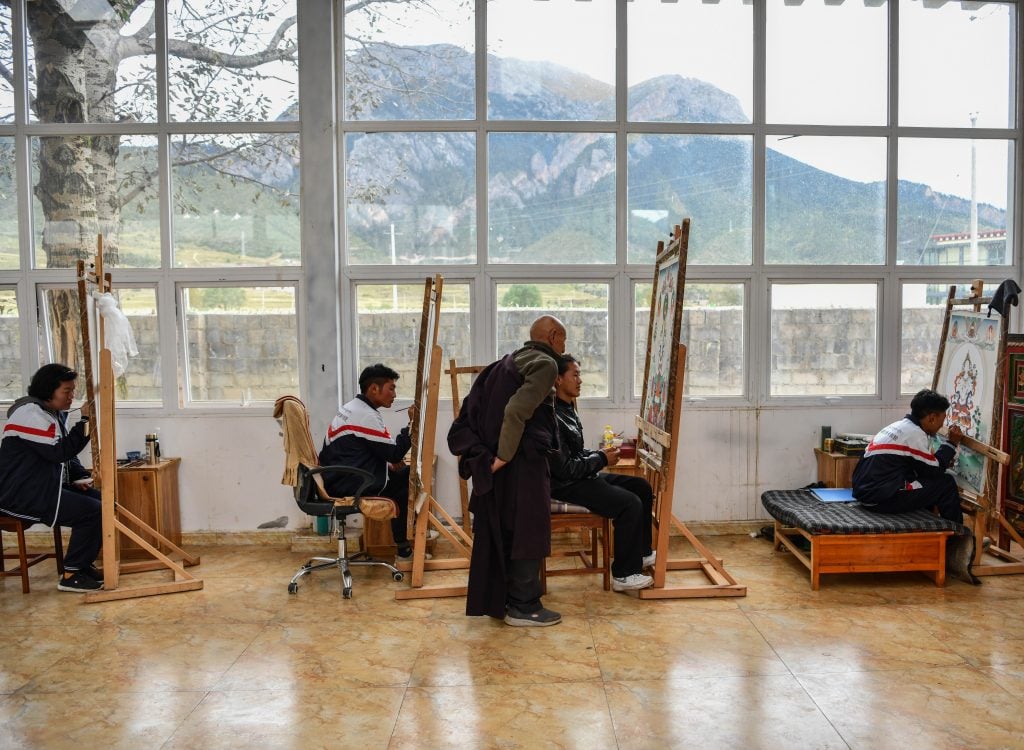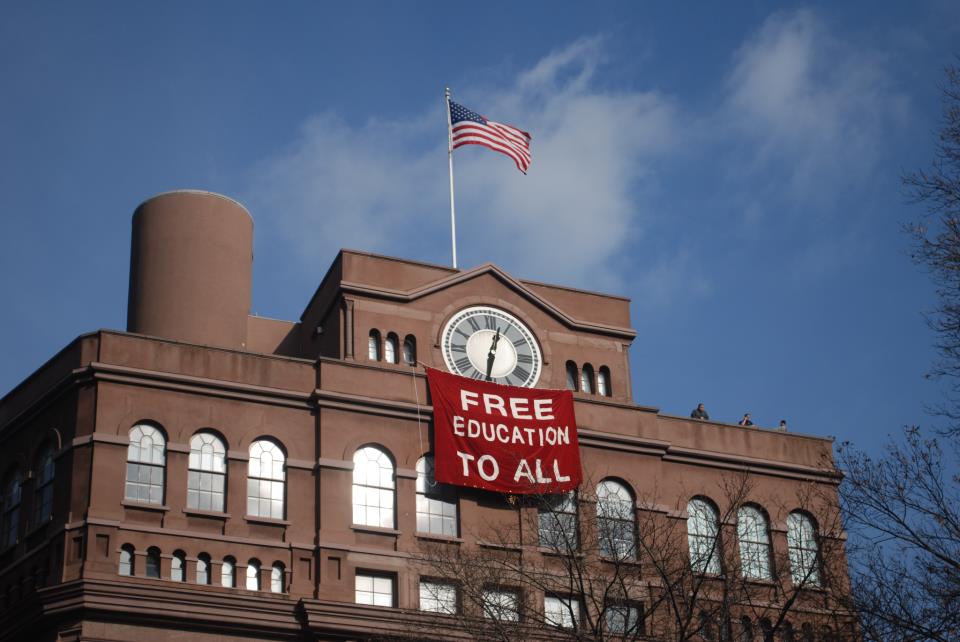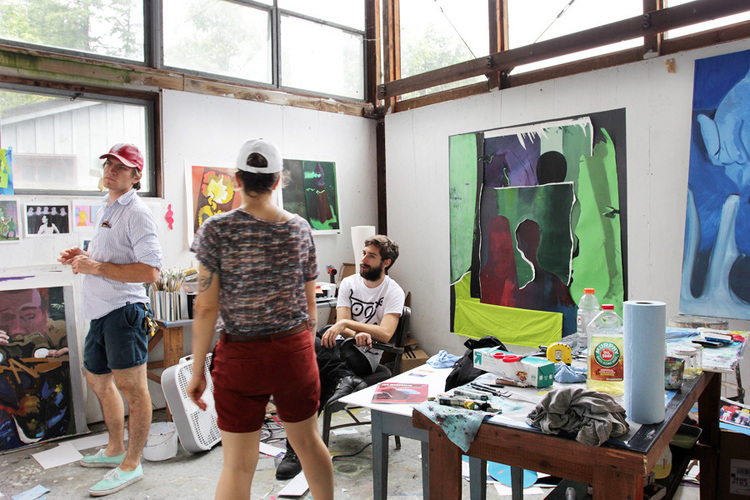Art World
Ask the Experts: Do I Have to Go to Art School to Become a Successful Artist?
We asked experts about the pros and cons of higher education and they gave us some food for thought—and a few alternatives.

We asked experts about the pros and cons of higher education and they gave us some food for thought—and a few alternatives.

Francesca Gavin

Education isn’t cheap. The increasing professionalization of the art world means getting a degree is an increasingly desirable path for many young artists, but the levels of debt that come with the pursuit of knowledge makes this option only viable for some. The question is: Can you become a successful artist without a degree from Yale or the Royal College of Art?
There are very good examples of successful contemporary artists who have side-stepped the academic route. Carsten Höller and Yoko Ono did not attend art school, Jeremy Deller studied art history rather than fine art, and Tosh Basco—aka boychild—started out in the underground club scene before working with their partner Wu Tsang and friend Korakrit Arunaanondchai. All these artists managed to embed themselves within the networks of the art world. They exhibited. They spoke the language.
American-Belgian artist Cecile B. Evans trained as a method actor before entering the art world, and their unique perspective helped in the shift, says their gallerist, Emanuel Layr. “Cecile was restless in understanding the place of an artist,” he explains. “It is exciting to see them moving in between media—sometimes as a movie director.”
Nonetheless, Layr is a supporter of an arts education—if you have the right teachers. “I think it can be really great if there’s a strong connection to a mentor or someone who actually gives you guidance in the beginning,” he says. “But how many artists really have such a great situation with a professor?” And in many countries, art school is expensive. Amassing $50,000 in debt when you have no guarantee of a job at the end can be a terrifying prospect. As Layr points out, committing to a career in the arts “still is a class question.”

Students hang banner below the historic clock tower at Cooper Union in New York City during a 2012 occupation protesting implementing tuition in the historically free school. Photo by Free Cooper Union, Creative Commons Attribution-Share Alike 3.0 Unported license.
The high cost of art school became even more pronounced during the pandemic, when many art schools were unable to offer the usual elements of a degree course, like group critiques, studio time or access to communal equipment—let alone the social interaction. “Students were very disempowered and disenfranchised by the lockdown and understandably really upset,” says Peter Davies, a painter who shows with The Approach and teaches at the Slade School of Fine Art in London. ”They were conscious of being consumers and of having paid a very considerable amount in fees, but not getting the experience they were expecting. During lockdown, fine art courses weren’t even able to provide studio space, with all activity being online. This was hugely problematic.”
Arguably, students’ frustrations are a sign of a generational shift around the idea of arts education itself, with it being seen as a service being paid for rather than an investment towards future success that might not pay off quickly. “The cost of living, and the cost now of university education, means many potential students who are also potentially amazing artists are being put off studying fine art, since it won’t lead to a reasonable salaried job, in the way other university courses might.”
Despite this, Davies is vocal about the importance of an education as a way to prepare young artists for the wider world. And some recent Slade BFA graduates, such as Zeinab Saleh and Danielle Brathwaite-Shirley, already have strong institutional and gallery presences, despite not having a higher degree, he says. In fact, many are foregoing postgraduate programs. Artists without MFA degrees, like Rhea Dillon, who studied fashion communications for her BA from Central Saint Martins art school in London, and Phoebe Collings-James, have all found notable success.
Perhaps the biggest benefit of art school might be the connections students make there. Sebastian Lloyd Rees went to Goldsmiths for his BA, where he met Ali Eisa and formed Lloyd Corporation, an ongoing collaborative practice making installation and performance art. Rees also works independently as a painter, which he started after completing his degree. “Knowledge is one of the biggest factors to development and to push yourself forward. But is going to art school going to make you become an artist, when you graduate? Unfortunately not. I really don’t think so,” he says. “If I look back at Goldsmiths, as an institution, what it really did for me was to start a collaboration.”

Residents in the studio space at Skowhegan. Image courtesy of Skowhegan School of Painting and Sculpture.
Rees also offers some important questions those thinking about going to art school should ask before applying to a specific school: How many people are taking the course? How much time do you actually get to speak to your tutor?
As the popularity of arts programs has grown over the past decade, a flurry of alternative art schools emerged, demonstrating the strong desire for an affordable arts education outside of the established institutional structures. Bruce High Quality Foundation notably ran a free school in New York for a few years, with open lectures and workshops. Open School East in the UK was established in 2013 as “an independent free art school” with a focus on “emerging practitioners of different generations, with or without a BA, MA or formal qualification,” according the application website. Alumni include the artists Lucy Beech and Paul Maheke Ngamaha.
Another interesting alternative project is the University of the Underground, established in 2017 and based between nightclubs in Amsterdam and London. Its founder, artist Nelly Ben Hayoun-Stépanian, describes the non-profit as an advocacy network for free artistic and transnational education, where students work with established institutions from Deliveroo to the United Nations on a slate of collective performances, activist events and installation projects. “The core idea of the University of the Underground is the event or the experience as the starting point of a conversation between nightlife creators and public institutions,” she says.
The student body is made up of nightlife artists, sex workers, poets, and other art school graduates. “We try to invest as much as possible in young people, like age 21,” she says. “They come from all different backgrounds—in general, I would say from underrepresented backgrounds, people that don’t fit the normal academic bill.”
Hayoun-Stépanian, who has a PhD in human geography and political philosophy, is nonetheless aware of the importance of education on a CV. But she argues that in order for institutions like the education system to be decolonized, experimental approaches are necessary. “In order for mainstream education to evolve, a radical new model must take place,” she says.
The fundamental issue at hand is what purpose an arts education is meant to serve. If you are looking for a return on a hefty investment in the form of a guaranteed flourishing career, then arts school will probably disappoint you. Art schools could also be seen as a training ground where artists learn to produce the most appealing and saleable commodities for the market or institutional system, which is dominated by private interests and cultural norms. Yet, you could also view art schools as some of the last spaces where intellectual stimulus persists and other forms of thinking can emerge.
So, art school is either the last bastion of cultural resistance against capitalist power—or a way of assimilating dissent into a readily consumable package. Either way, you can find success without it.